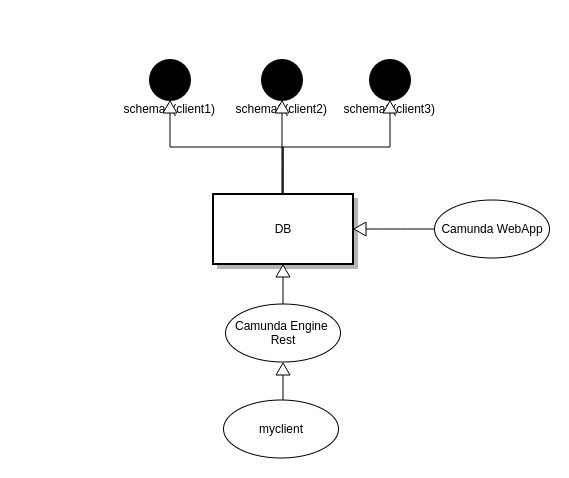Hi, we are developing a new project and we want to use camunda spring-boot version, because is easier integrate another things like (spring-config,spring-boot-admin,Consul Service Discovery,Rabbitmq)
I have a customer per schema and I have opened this issue (Multi-Tenancy schema strategy · Issue #264 · camunda/camunda-bpm-spring-boot-starter · GitHub) to understand how I can resolve this problem with camunda
From what I understood I have two options:
Strategy 1 (Multi-Tenancy | docs.camunda.org):
When I have one new customer, I would have to setup a tenant in camunda xml file and to invoke this engine(/engine/:engine/task) in my rest-client.

Strategy 2:
Using this strategy I would have one container per engine and in my rest client I’ll need to invoke a specific container per tenant.
How I don’t have microservice scenario the strategy two will be very expensive and I wouldn’t like to discard spring-boot version. So someone have any ideia to how I can handle with many schemas in spring boot?
